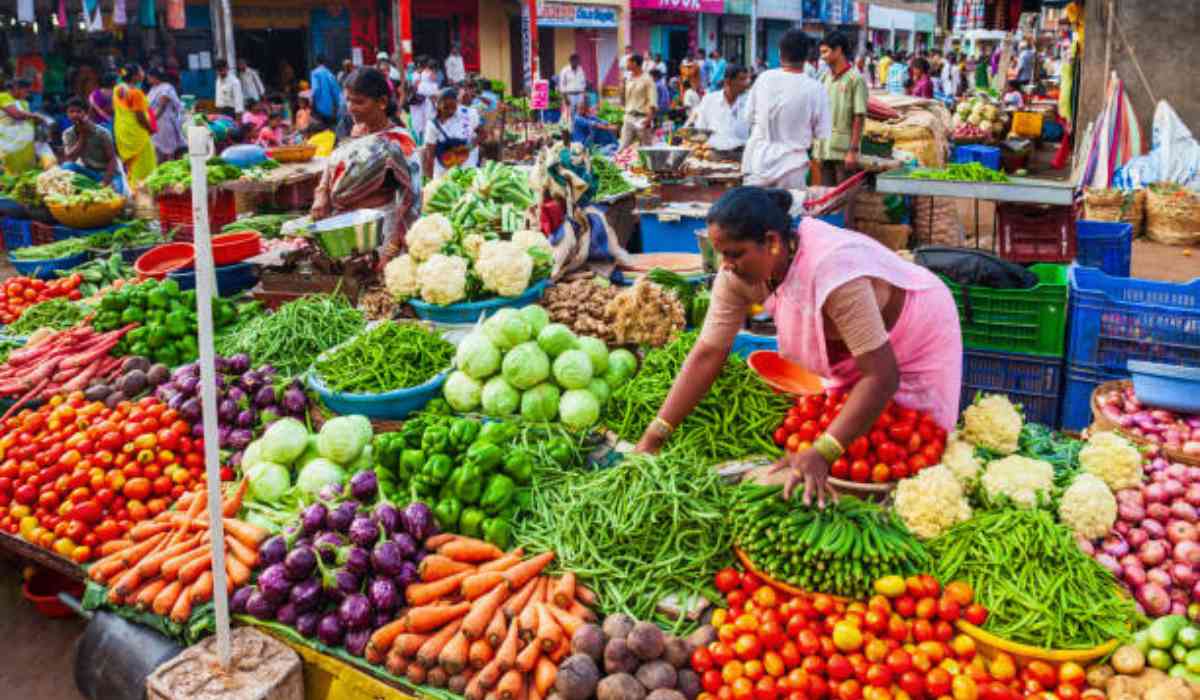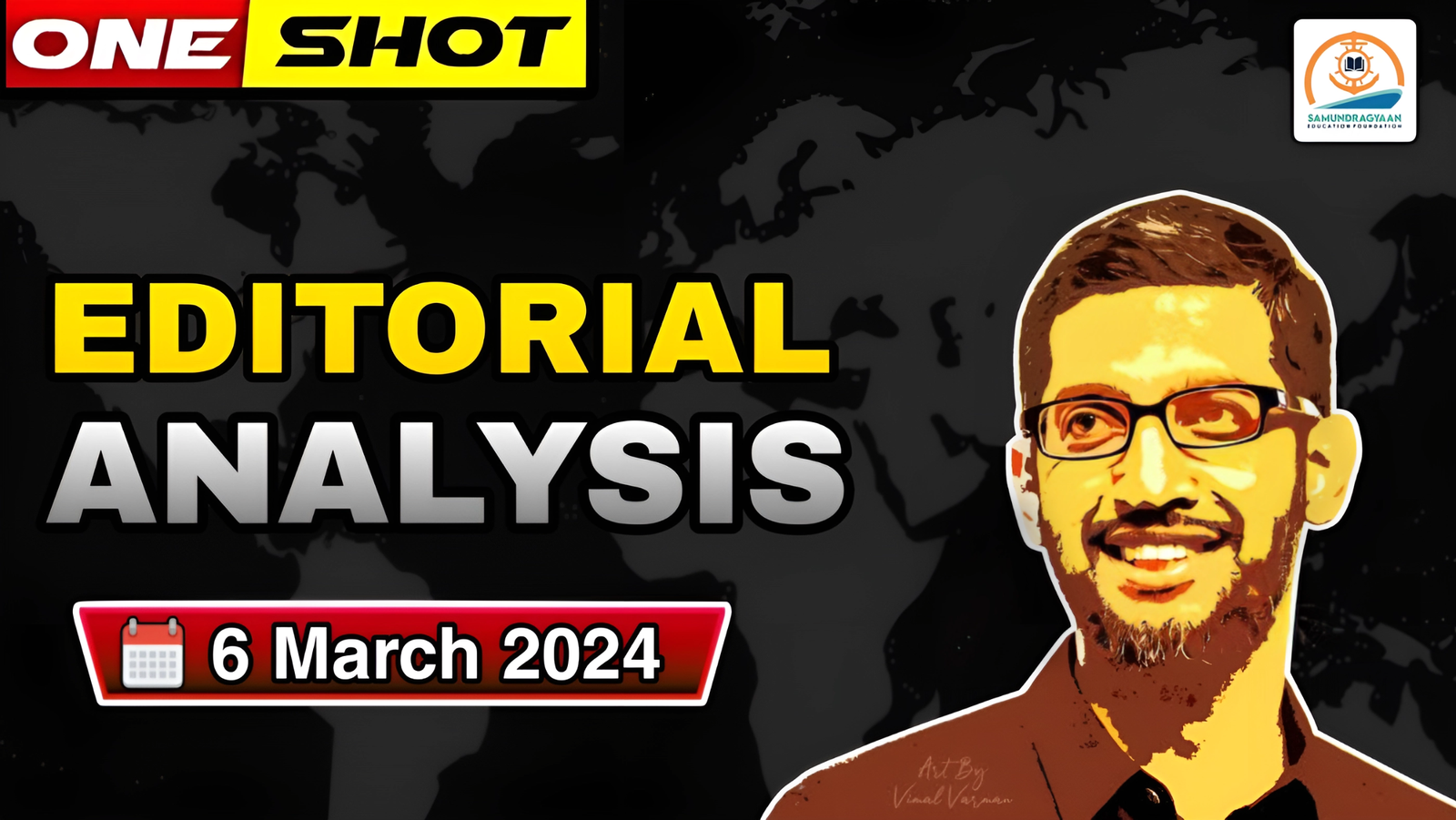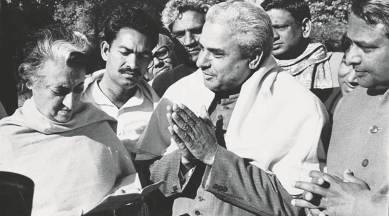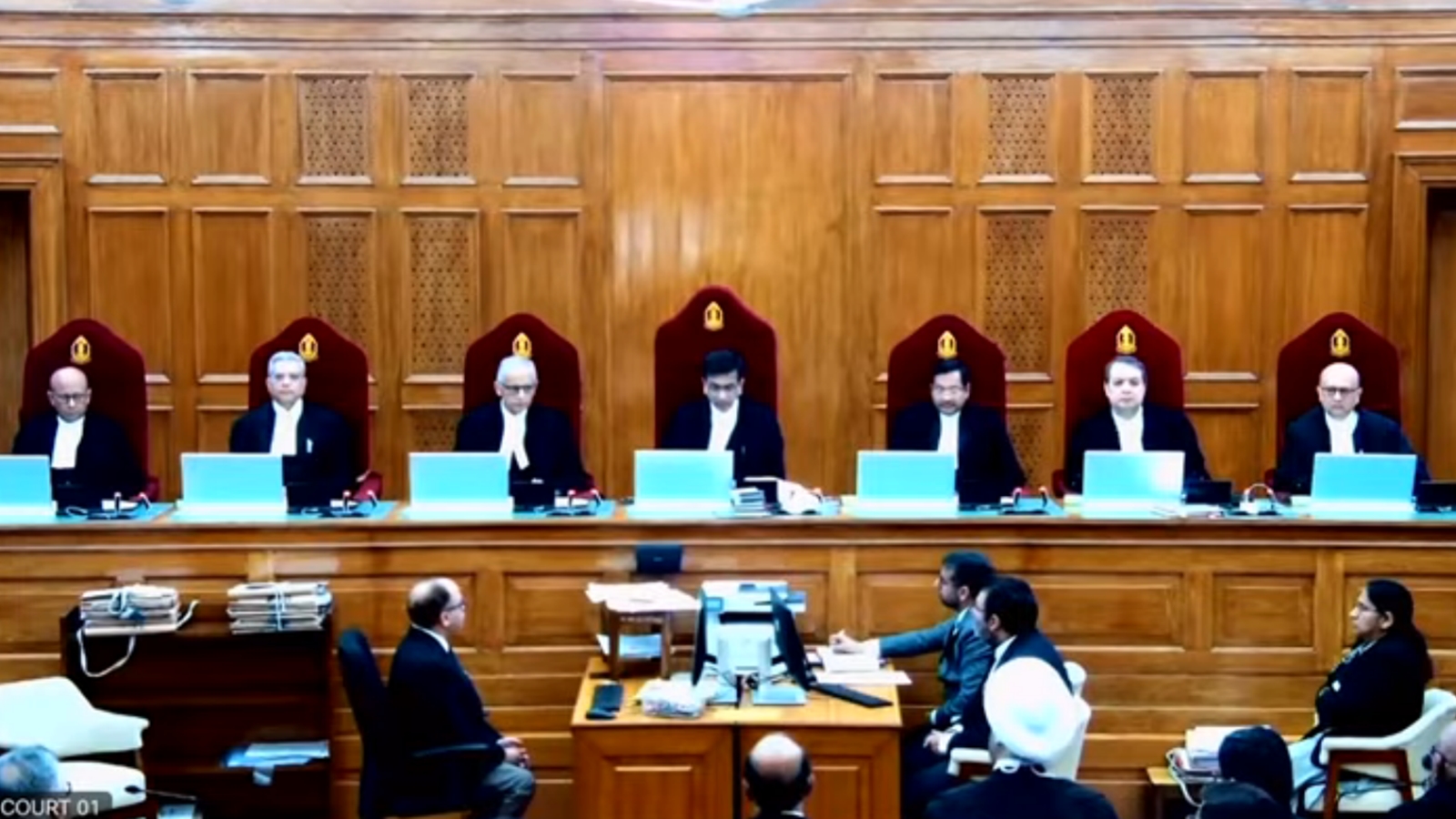Why in News?
- According to the U.S. NOAA, the world is on the verge of a fourth mass coral bleaching event which could see wide swathes of tropical reefs die, including parts of Australia’s Great Barrier Reef.
What’s in Today’s Article?
- What are Corals and Coral Reefs?
- What is Coral Bleaching and Why is it a Cause for Concern?
- What are the Findings of the National Oceanic and Atmospheric Administration (NOAA)?
What are Corals and Coral Reefs?
- Corals are animals (polyps), which live in a symbiotic relationship with tiny algae called zooxanthellae.
- These algae provide the corals with food and oxygen, and in return, the corals provide them with a safe place to live.
- Coral reefs are limestone structures formed by thousands of tiny coral animals and are found in tropical climates.
- Major coral reefs in India:
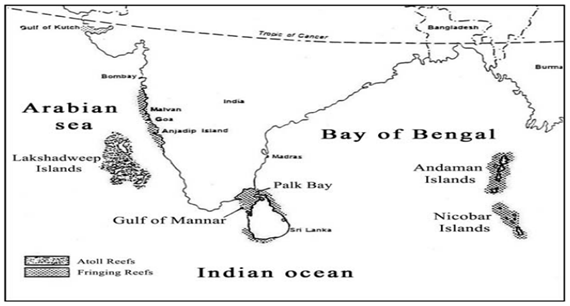
What is Coral Bleaching and Why is it a Cause for Concern?

- When corals are exposed to stressful conditions, such as high temperatures, pollution, or changes in the water’s chemistry, they expel the zooxanthellae.
- Without them, the coral loses its color and turns white, hence the term “bleaching.” Corals cannot live very long in this state.
- Coral bleaching doesn’t necessarily mean the end of the reef. If the stressor is removed in time, the zooxanthellae can come back and the corals can recover.
- Coral reefs provide a home and a source of food for countless species of fish and other marine creatures.
- They also protect coastlines from erosion and storms, and play a vital role in regulating the Earth’s climate by absorbing and storing carbon dioxide.
- Additionally, coral reefs are a stunning display of biodiversity and natural beauty, and their loss would be a tragedy for future generations.
- When coral reefs suffer, so do the ecosystems and the people that depend on them.
What are the Findings of the National Oceanic and Atmospheric Administration (NOAA)?
- The world is on the verge of a fourth mass coral bleaching event (after 1998, 2010 and 2014).
- For an event to be deemed global, widespread bleaching must occur in three ocean basins – the Atlantic, Pacific and Indian.
- The last global mass coral bleaching event ran from 2014 to 2017, during which time the Great Barrier Reef lost nearly a third of its corals.
- Preliminary results suggest that about 15% of the world’s reefs saw large coral die-offs in this event.
- This year is turning out to be even worse. For example, following the Northern Hemisphere summer last year, the Caribbean registered its worst coral bleaching on record.
- Coral bleaching is often tied to the naturally occurring El Nino climate phenomenon which leads to warmer ocean waters.
- The world also just registered (as a result of climate change) its first 12-month period with an average temperature over 1.5 degrees Celsius (2.7 degrees Fahrenheit) above pre industrial levels.
- A rise of 1.5C is believed to be the tipping point for mass coral die-offs, with scientists estimating that 90% of the world’s corals could be lost.
Why did Google De-list some Indian Apps from Play Store?

What’s in Today’s Article?
- About the Issue (Context, Google’s Policy, Apple’s Policy, Response of Regulators, etc.)
- About CCI (Objectives, Functions, Powers, etc.)
Background:
- On March 1, Google announced that it was pulling the apps of almost a dozen firms out of its marketplace for Android apps.
- However, after the Ministry of Electronics and Information Technology intervened, the apps were restored subsequently, but the issue remains unresolved.
What is the Issue?
- At the heart of the issue is Google’s platform fees.
- For all in-app purchases that involve a purely digital service — such as an e-book purchase or an OTT streaming subscription — Google collects a fee of anywhere between 11 to 30% per transaction.
- This fee, Google argues, helps the company pay for Google Play and develop the Android ecosystem.
- The exact fee paid by each developer varies.
- For example, if a developer is using Google’s own billing product, and is offering a recurring subscription service, or if they make less than $1 million a year in revenue from in-app payments, the company charges 15%.
- For app purchases for bigger firms, the amount is 30%. In India and South Korea, where regulatory scrutiny on these fees has been among the most intense, Google collects 11% or 26% in fees if developers choose to use a different payment method.
- However, Indian developers — like many global counterparts — see these fees as a high price to pay.
- Some, including Bharat Matrimony and Disney+ Hotstar, approached the judiciary at different stages to avoid paying the fee altogether.
What about other Marketplaces?
- Apple has not faced similar pushback in India, as relatively fewer Indians use its products.
- Android, however, dominates the smartphone market, and Google Play is widely seen as the best bet for developers who want to be discovered by consumers.
- However, both Apple and Google have faced serious international resistance to these fees, and both firms have pushed back strongly against developers’ resistance.
- For example, the music streaming firm Spotify filed a complaint with the European Commission, after Apple stopped Spotify from telling its users how to pay for its service using a browser to avoid the App Store’s fees.
- Additionally, Spotify said this was anti-competitive because Apple Music was not subjected to the 30% barrier that was erected for Spotify.
- Following the complaint, Apple was hit with a €1.84 billion fine by the European Commission, which ruled that it had fined the company over “unfair trading conditions”.
- Similarly, in the U.S., Epic Games, the developer of the popular Fortnite franchise, sued Apple as well as Google over the 30% fee.
- Unlike Apple, Google allows third party app stores around the world, something that gives app developers a little more leeway in avoiding these fees.
- But Google Play comes installed by default on most Android phones.
How has the Competition Commission of India Responded?
- The Competition Commission of India (CCI) had in 2022 fined Google Rs. 936 crores for its Play Store policies.
- The company is in the process of appealing that fine, as well as orders by the CCI that it give developers comprehensive choices for in-payments.
- An appeal by Google against this fine is pending at the National Company Law Appellate Tribunal.
- Meanwhile, the Indian apps that went to the Court are back on the platform for now.
- In-app payments are not yet a major part of the digital economy in India, as purely digital services for which Indian consumers have been willing to pay have been limited to content streaming, dating and matrimonial service.
About Competition Commission of India (CCI):
- The Competition Commission of India (CCI) is a statutory body established in March 2009 under the Competition Act, 2002.
- Objectives:
- Eliminate practices having adverse effect on competition
- Promote and sustain competition
- Protect the interests of consumers
- Ensure freedom of trade in the markets of India
- The CCI aims to establish a robust competitive environment through:
- Proactive engagement with all stakeholders, including consumers, industry, government and international jurisdictions
- Being a knowledge intensive organization with high competence level
- Professionalism, transparency, resolve and wisdom in enforcement
- The Commission consists of one Chairperson and six members who shall be appointed by the Central Government.
Functions of CCI:
- Ensure consumer interests are protected in the market
- Implement the policies enumerated in the Competition Act, 2002
- Advocate and educate other Government bodies about the Competition Act, 2002. Such as state governments and ministries etc.
- To promote fair and constructive competition practices in the market
- To prevent the realisation of anti-competitive agreements
- To cooperate with other regulatory bodies to work more efficiently in ensuring the continuity of a free and fair market
Powers of CCI:
- The Competition Commission of India has the power to inquire into a certain agreement as well as the dominant position of enterprises.
- It has the power to inquire into any acquisition or combination if it determines that such acquisition or combination may adversely affect competition in the Indian market.
- It has the power to regulate its own procedures.
- It has the power to impose monetary penalties upon violation of the Competition Act, 2002.
- It has the power to pass an interim order for any act where there has been anti-competition agreements or abuse of position by dominant parties which adversely affects the competition in the market.
MethaneSAT – a satellite which will ‘name and shame’ methane emitters

Why in news?
- MethaneSAT — a satellite which will track and measure methane emissions at a global scale — was launched aboard a SpaceX Falcon9 rocket from California.
- It is crucial to cut methane emissions. And the main culprit: fossil fuel operations, which account for about 40 per cent of all human-caused methane emissions.
- The objective of MethaneSAT is to help achieve this goal.
What’s in today’s article?
- Need to track and measure methane emissions
- MethaneSAT
Need to track and measure methane emissions
- Greenhouse effect
- Methane is an invisible but strong greenhouse gas, and the second largest contributor to global warming after carbon dioxide.
- It is responsible for 30 per cent of global heating since the Industrial Revolution.
- According to the United Nations Environment Programme, over a period of 20 years, methane is 80 times more potent at warming than carbon dioxide.
- Responsible for pre-mature deaths
- The gas also contributes to the formation of ground-level ozone — a colourless and highly irritating gas that forms just above the Earth’s surface.
- According to a 2022 report, exposure to ground-level ozone could be contributing to one million premature deaths every year.
MethaneSAT
- About
- Essentially, MethaneSAT will orbit the Earth 15 times a day, monitoring the oil and gas sector.
- It will create a large amount of data, which will tell how much methane is coming from where, who’s responsible, and are those emissions going up or down over time.
- The data collected by MethaneSAT will be made public for free in near real-time.
- This will allow stakeholders and regulators to take action to reduce methane emissions.
- Institutions involved in the development
- The entity behind MethaneSAT is the Environmental Defense Fund (EDF) — a US-based nonprofit environmental advocacy group.
- To develop the satellite, EDF partnered with Harvard University, the Smithsonian Astrophysical Observatory, and the New Zealand Space Agency.
- Features
- Fills the critical gaps in existing monitoring systems
- While some satellites can provide high-resolution data, they can only scan specific, pre-targeted sites.
- Others can examine larger areas and detect large emitting events, but cannot scan smaller sources that account for the majority of emissions in many.
- Due to this discrepancy, according to an International Energy Agency (IEA) report, global methane emissions are about 70 per cent higher than levels reported by national governments.
- MethaneSAT is expected to fix the issue.
- Equipped with a high-resolution sensors
- Equipped with a high-resolution infrared sensor and a spectrometer, the satellite will fill critical data gaps.
- It can track differences in methane concentrations as small as three parts per billion in the atmosphere.
- This enables it to pick up smaller emissions sources than the previous satellites.
- Wide-camera view to identify super-emitters
- MethaneSAT also has a wide-camera view — of about 200 km by 200 km — allowing it to identify larger emitters so-called super emitters.
- Use of AI
- The collected data will be analysed using cloud-computing and AI technology developed by Google — the company is a mission partner.
- The data will be made public through Google’s Earth Engine platform.
Significance of MethaneSAT
- To fulfil the objectives of the Global Methane Pledge 2021
- More than 150 countries signed the Global Methane Pledge in 2021, to cut their collective methane emissions by at least 30 per cent from 2020 levels by 2030.
- At last year’s COP, more than 50 companies committed to virtually eliminating methane emissions and routine flaring.
- MethaneSAT will help them meet these targets.
- To promote transparency
- The satellite will also usher in a new era of transparency.
- Its publicly available data, which can be accessed by anyone in the world, will keep track of methane commitments made by governments and corporations.
Former DU professor GN Saibaba acquitted over alleged Maoist links

Why in news?
- The Nagpur Bench of the Bombay HC acquitted former Delhi University Professor G.N. Saibaba and five others in a Maoist links case under the Unlawful Activities (Prevention) Act (UAPA).
- The court said that the prosecution could not prove the case against them beyond reasonable doubt.
What’s in today’s article?
- Unlawful Activities (Prevention) Act (UAPA)
- Background of the case
- News Summary
The Unlawful Activities Prevention Act (UAPA), 1967
- About
- Enacted in 1967, UAPA is the primary counter-terror law in India.
- It was enacted to outlaw and penalise unlawful and terrorist activities, which pose a threat to the integrity and sovereignty of India.
- These activities include:
- Aiding and abetting terrorists
- Funding terrorists
- Inciting anti-national feeling in the masses
- Other unlawful activities against the state
- Key provisions of UAPA
- Wide ranging powers to Central Govt
- It provides wide-ranging powers to the Central Government to designate organisations as terrorist organisations
- It also prescribes the penalties for taking part in the activities of such organisations.
- Applicability
- It is also applicable if the offences are committed outside India. Both Indian and foreign nationals can be charged.
- Timeline
- A charge sheet can be filed in maximum 180 days after the arrests.
- The investigation has to be completed within 90 days.
- If investigation is not completed with the stipulated time, the accused is eligible for default bail.
- Special court
- The act establishes a special court designated to conduct trials.
- Sanction to prosecute under UAPA
- Section 45(1) of the UAPA says no court shall take cognizance of any offence under the Act without the previous sanction of the central or state government or any officer authorised by them.
- Under Section 45(2), the sanction for prosecution has to be given within a prescribed time only after considering the report by the competent authority.
2019 Amendment of UAPA
- The original act was amended in the years 2004, 2008, 2013, and 2019 to increase its scope and ambit. 2019 amendment changed the following:
- Who may commit terrorism:
- The amendment additionally empowers the government to designate individuals as terrorists on the same grounds.
- Approval for seizure of property by NIA:
- The Amendment adds that if the investigation is conducted by an officer of the NIA, the approval of the Director General of NIA would be required for seizure of such property.
- Insertion to schedule of treaties
- The Act defines terrorist acts to include acts committed within the scope of any of the treaties listed in a schedule to the Act.
- The Schedule lists nine treaties, including the Convention for the Suppression of Terrorist Bombings (1997), and the Convention against Taking of Hostages (1979).
- The Amendment adds another treaty to the list. This is the International Convention for Suppression of Acts of Nuclear Terrorism (2005).
Background of the case
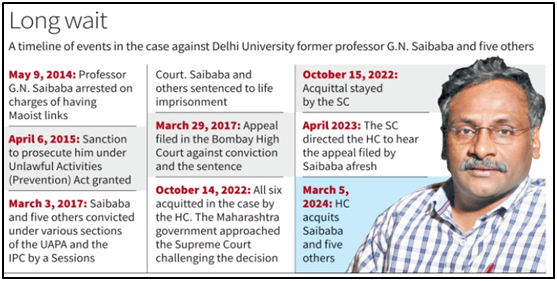
- Conviction of Saibaba and 5 others
- G N Saibaba and five others were arrested between 2013 and 2014.
- All six accused were charged with criminal conspiracy to wage war against the Government of India through unlawful activities by use of violence.
- They were arrested on allegations that they were members of the banned Communist Party of India (Maoist) and its frontal group Revolutionary Democratic Front.
- They were convicted of alleged involvement in Maoist activities in March 2017.
- Five of the convicts, including Saibaba, were given life imprisonment; the sixth, Vijay Tirki, was given rigorous imprisonment because he was a first-time offender.
- Acquittal by Bombay High Court in 2022
- In October 2022, the Nagpur bench of the Bombay HC acquitted G N Saibaba and four others of aiding and abetting Naxal activities (the fifth one had died by that time).
- The court held the entire trial against them to be null and void in the absence of a valid sanction under section 45(1) of the Unlawful Activities Prevention Act.
- As per the Court, the sanction to prosecute under UAPA was accorded by the Maharashtra govt after the trial began against the accused.
- However, as per section 45(1) of UAPA, it should have been submitted before the trail.
- As for other accused, the reviewing authority’s report to the State home department seeking grant of sanction was without reasons.
- The bench held that this exclusion was a breach of the mandatory provisions of sub-section (2) of Section 45 of the UAPA.
- The division bench underlined the importance of following due process in legal proceedings.
- Supreme Court set aside the October 2022 HC verdict
- In October 2022, the SC suspended the Nagpur bench verdict
- It held that the high court had not gone into the merits of the case or the seriousness and gravity of the offences for which the accused were convicted.
- In April 2023, the SC directed the HC to hear the appeal filed by Saibaba afresh.
News Summary: Former DU professor GN Saibaba acquitted over alleged Maoist links
- Former Delhi University Professor G.N. Saibaba was acquitted by the Bombay High Court.
- The Court noted that the prosecution failed to prove the case beyond reasonable doubt against him and other accused in the case.
- The court ordered the immediate release of the academician-activist, who is completely wheelchair-bound and 90 per cent disabled.
- HC noted that the entire prosecution was vitiated on account of an invalid sanction to prosecute the accused.
- The court also noted that the trial that was held despite the violation of mandatory provisions of law amounted to a failure of justice.
- It further pointed out that the prosecution failed to establish legal seizure of material and could not prove any incriminating material against the accused.
